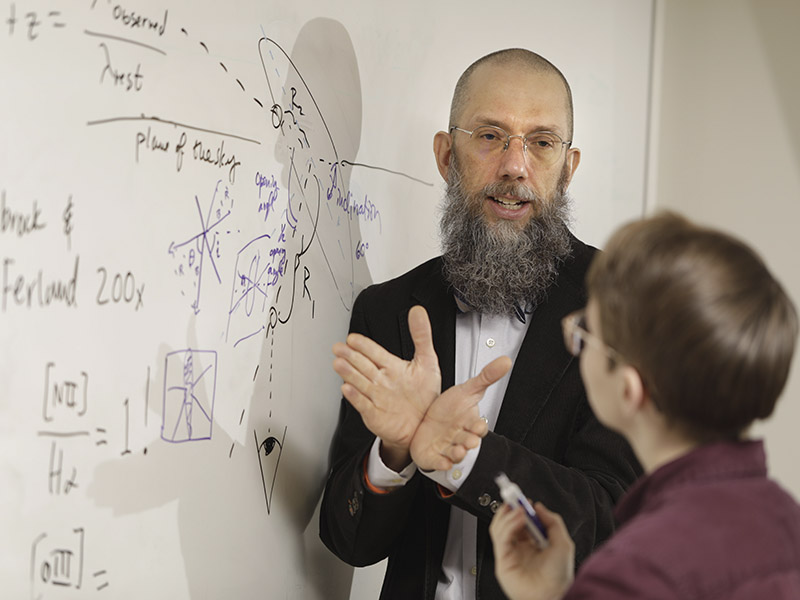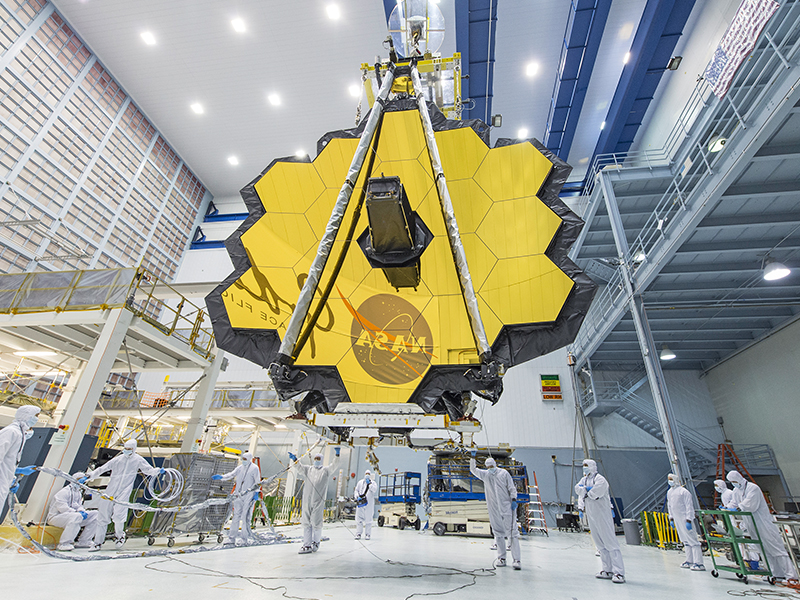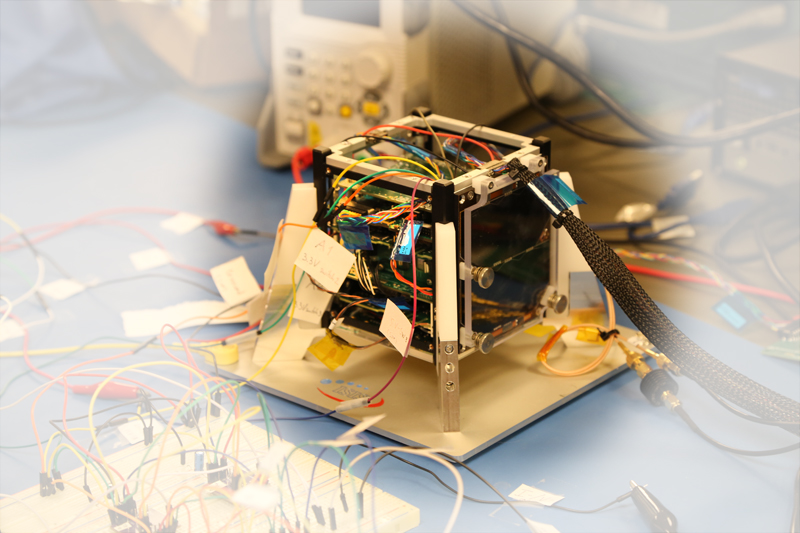
Dr. David Rupke is the software lead for an international collaboration of astronomers and astrophysicists studying distant quasars with NASA's new flagship observatory, the James Webb Space Telescope.
The Webb Telescope, which launched on Dec. 25, 2021, and is the successor to NASA's Hubble telescope, is an international partnership between NASA, the European Space Agency, and the Canadian Space Agency. Incredibly luminous and rare, quasars are found in the centers of some galaxies and powered by gas spiraling at high velocity into a supermassive black hole. Quasars can be so bright that they outshine their host galaxies, and Rupke has been leading the effort to develop special software to study the quasar itself, the fainter host galaxy, and the even fainter gas flowing out from the host. Three Rhodes students in his lab—Hui Xian Grace Lim '23, Lillian Whitesell '23, and Ryan McCrory '25—have contributed to the software.
In October, the European Space Agency announced a surprising discovery made by the scientists using the telescope: "Webb's spectroscopic capabilities, combined with its infrared sensitivity, have uncovered a cluster of massive galaxies in the process of formation around an extremely red quasar. The result will expand our understanding of how galaxies in the early Universe coalesced into the cosmic web we see today."

"The exciting part of a new scientific tool, especially one as special as Webb, is its potential to reveal the unexpected," says Rupke. "Webb certainly lived up to that potential in this case. I'm grateful that my students and I have been able to participate in that process of discovery."
RHOK-SAT
That's not all the NASA news at Rhodes. In 2021, a Rhodes College team learned that a proposal for a four-inch cube satellite of their own design, dubbed RHOK-SAT, was accepted to be flown aboard a NASA-sponsored rocket. Now the team is getting the satellite ready for launch into space by late 2024, and have been practicing how they will communicate with it by tracking current satellites in space using a ground station built on campus.
The project began in 2019 after Dr. Charles Robertson Jr. '65 encouraged Rhodes to develop a proposal to be submitted to NASA's CubeSat Launch Initiative and generously provided funding for the project.
RHOK-SAT's experiment is to investigate the hardiness and performance of new solar cell materials that may someday power spacecraft in orbits far from the Sun. These new solar cells are being investigated by The University of Oklahoma—ergo, the name RHOK-SAT, demonstrating the collaboration between Rhodes and Oklahoma. The team will be exploring how the cells hold up under solar radiation and the overall environment of space and if this type of cell material shows promise for future lunar and planetary missions.
The idea to test the space hardiness of novel solar cells for lunar and planetary missions came from students. Students have also been involved in writing software to collect and store data from RHOK-SAT and for the satellite to monitor the charge of its own battery and have designed and built the experimental hardware.
Professors Ann Viano, Brent Hoffmeister, Bentley Burnham, and instructional support technician Lanre Obadina of the Department of Physics and Professor Phil Kirlin of the Department of Mathematics and Computer Science have served as the project's faculty advisors. Jose Pastrana '20 is leading the software team in the production of the flight software and Brad Hensley '12 is serving as a consultant for the project at large.
Hensley, who is a systems engineer, was also involved in a NASA-simulated mission to Mars during the summer of 2022. For 45 days, he and other crew members lived and worked like astronauts on the Human Exploration Research Analog at NASA's Johnson Space Center in Houston. RHOK-SAT will be in orbit for roughly one year and will transmit data to the Rhodes ground station on campus. RHOK-SAT will disintegrate upon re-entry into Earth's atmosphere, but hopefully it will have provided enough data to benefit future space missions.
